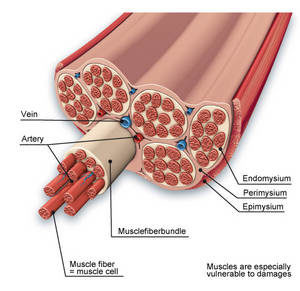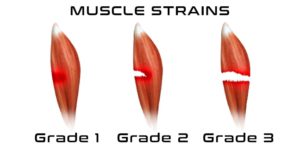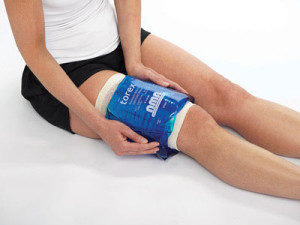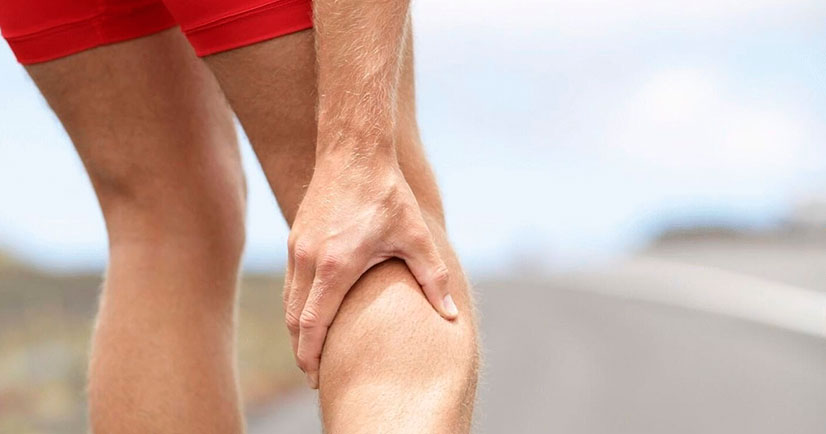Muscle Strains
Have you ever wondered what muscle strains really are? This week we’re going to look at this common injury and see exactly what happens to the injured muscle. We’ll also look at some common symptoms, and the best ways to treat a strain depending on the severity.
Anatomy of a Strain

Muscle anatomy.
Today we’re going to look at what happens behind the scenes of a muscle strain. Muscles consist of thousands of individual fibers, or cells, that work together to make the muscle move. If the muscle tries to move against a weight or force that is too strong these small individual fibers can stretch or tear. The strain’s severity depends on the number of fibers injured. Strains can also injure small blood vessels that feed the fibers. So, when you ‘pull’ a muscle you’ve actually torn hundreds or thousands of individual muscle cells.
Symptoms and Grading
Symptoms can differ dramatically depending on how severe the muscle strain is. In mild, or Grade I, strains fewer than 10% of the fibers may be overstretched. You might experience sore ness, slight swelling, and tenderness to the touch, but the muscle will still move normally. Grade II strains have a wide range of symptoms depending on how many fibers have been injured. Bruising, swelling, stiffness and loss of muscle function are common symptoms at this level. Grade III strains are complete muscle tears. Along with severe pain, bruising and loss of function the muscle may be ‘balled’ up.
ness, slight swelling, and tenderness to the touch, but the muscle will still move normally. Grade II strains have a wide range of symptoms depending on how many fibers have been injured. Bruising, swelling, stiffness and loss of muscle function are common symptoms at this level. Grade III strains are complete muscle tears. Along with severe pain, bruising and loss of function the muscle may be ‘balled’ up.
Treatment
Grade I muscle strains are treated with PRICE; protection, rest, ice, compression, and elevation. Grade II strai ns are often treated in multiple stages beginning with PRICE and progressing to active rehabilitation to ensure the muscle fully heals. Grade III strains require surgery to repair the muscle fibers and restore function. Chiropractic care is a great starting point for Grade I and II strain recovery. It’s always a good idea to have an injury examined by a chiropractic physician to make sure the healing process is as efficient and safe as possible.
ns are often treated in multiple stages beginning with PRICE and progressing to active rehabilitation to ensure the muscle fully heals. Grade III strains require surgery to repair the muscle fibers and restore function. Chiropractic care is a great starting point for Grade I and II strain recovery. It’s always a good idea to have an injury examined by a chiropractic physician to make sure the healing process is as efficient and safe as possible.

